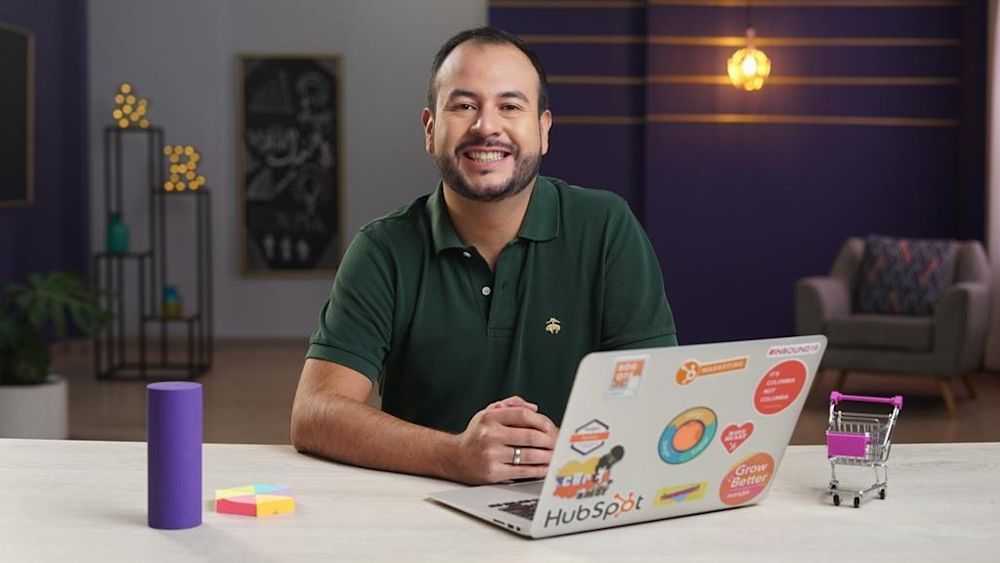How Hubspot Is Earning LatAm’s HEART
Table of contents
If we said there was a company with a fantastic culture that helped organizations grow and its favorite color was orange, which company comes to mind? We’re talking about HubSpot.

If we said there was a company with a fantastic culture that helped organizations grow and its favorite color was orange, which company comes to mind?
We’re talking about HubSpot.
The company was founded in 2005 at Massachusetts Institute of Technology (MIT) with the purpose of helping small businesses achieve success in the digital world by helping them attract and build valuable relationships with their customers. Hubspot became the father of what is known today as inbound marketing.
Sixteen years have passed since its inception and HubSpot is now a with a market capitalization of around , 11 global offices with more than 5,000 employees, and, in 2020, its 121,000 customers accounted for a revenue of .
In 2018, Hubspot landed in Latin America, and, true to its principles, it has focused its attention on becoming a valuable ally for the region's ecosystem.
Three years have passed since then, and The Org had the opportunity to talk with Camilo Clavijo, Hubspot’s Senior Sales Director and Country Manager Latam, to learn first hand about Hubspot's adventure into Latin America and to get a glimpse of what’s next for the company in the region.
Why LatAm?
In the mid 2010s, HubSpot started to see incredible interest in the inbound movement throughout Latin America, and, as a data-driven company, the company decided to run an experiment in order to measure the company’s fit and growth capacities within the region. “After two years of testing and having positive results, on October 3, 2018, HubSpot decided to set up an office in Bogotá, Colombia” Clavijo recalled.
The first steps of this expansion were guided by humbleness, where the company decided to prioritize its learning and value generation capacity over revenue. “Usually, a startup's expansion into new markets is ruled by the ‘sell and then correct’ mentality. In HubSpot, we decided to understand our capacity to serve the market, and build from there. We decided to grow organically and be conscious of every step we’ve given.”
How did HubSpot organize for the market?
As a good preacher who applied its own teachings, HubSpot’s structure is based on its Flywheel Model: a customer centric approach consisting of attracting, engaging and delighting customers.
LatAm’s HubSpot team reports to the International Vice President and is primarily made up of sales, marketing, customer success and supporting areas. Product and technology resources are delivered from other non-local HubSpot teams to the region.
“Since the beginning, our local resources were primarily focused on earning the market’s attention (attracting), based on our inbound strategies, and leveraging local ecosystems and communities; and building sales (engaging) and customer success capabilities (delighting)”.
Growing with HEART
Clavijo’s team has had to pivot numerous times in the three years. “We found a market that was completely different from the one HubSpot was accustomed to: SMB’s in LatAm are more price sensitive, are smaller in size and more reluctant to try new ways of doing things. The latter seemed to be related to bad experiences they had with old fashion software implementation projects.”

HubSpot has gone through two ‘go to market’ stages. The first was a non-standard approach to the market that was contrary to the SaaS mentality because it implied many exceptions on how HubSpot delivers its value, but allowed the company to gain its first clients' trust, prove its value to the market and build its first regional success cases.
During the second phase, it segmented the market into north and south cones, re-classified its clients by size and began helping SMB’s overcome their past trauma with technology, helping them to understand what they need in order to grow, and showing how HubSpot could help them through their standard offerings.
“It wasn’t a matter of product market fit, we had tons of product validation in the region since 2015. It was a matter of how to help LatAm’s companies overcome a frustration that they had accumulated throughout the years and let them know that we understand them, and that we are here to help them grow through our methodology and platform” Clavijo said.
This path is a reflection of the HubSpot culture code: HEART, which stands for humble, empathic, adaptable, remarkable and transparent. “Culture for us is the operating system that powers and empowers us, the employees in HubSpot”. He adds: “It has been a key player on our road to success in this, and every market HubSpot is in today”.
What’s next?
HubSpot started with 25 employees in Latin America. There are now more than 200. Despite its organic approach to the market, the region has achieved a double digit growth year over year, serving thousands of clients all around LatAm. So this is just the beginning.
“After three years of listening, learning and ‘tropicalizing’ the company’s value proposition into the regional market, we are ready to scale”, Calvijo said. HubSpot’s main goals for the years to come in its LatAm adventure are to:
- Amplify its message and become an aspirational brand for users, companies and the entire ecosystem. “We will keep being true to our inbound methodology, but we’ll stop being shy in terms of investment and communication.”
- Take a more active role in the ecosystem, and its partner community. “We want to open more doors, build and scale communities, help more users and multiply our success stories in the region”.
- Build capabilities and local resources in other areas as a product. “It is no longer just replicating, but proposing changes in product and strategy. LatAm is becoming more relevant in terms of strategy and we want to lead the building of HubSpot products that better meet LatAm’s needs.
Create your own free org chart today!
Show off your great team with a public org chart. Build a culture of recognition, get more exposure, attract new customers, and highlight existing talent to attract more great talent. Click here to get started for free today.
In this article


The ¬Ð¿Ú¬“¬◊ helps
you hire great
candidates
Free to use – try today
